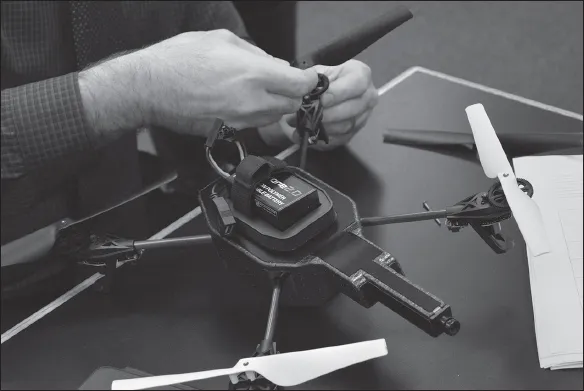
Drones in Education
Let Your Students' Imagination Soar
- English
- ePUB (mobile friendly)
- Available on iOS & Android
About this book
Get off the ground fast with this practical, accessible guide, which covers all you need to know to establish a successful drone program in your school. This book was written for educators who want to incorporate drones into their curriculum but have no idea where to start. It covers all the basics of starting a drone program in your school, such as which drones need to be registered and where you can fly them. It also provides recommendations on which drones are best for different age levels and subject areas. Complete with lesson plans, real-world applications and tips on securing funding, Drones in Education will enable you to get started using drones to engage your students in learning in a new way.This book:
- Discusses the rationale for using drones in education and offers data to support your goals.
- Includes stories from teachers who have successfully integrated drones into their classroom teaching.
- Explores the laws and ethical issues surrounding drones.
- Offers tips on selecting the right drone for your classroom and keeping it operational.
- Discusses classroom implementation through the SOAR (safety, operation, active learning, and research) model.
- Shares some of the uses of drones in the real world.
Use this book to integrate drones into your curriculum and instill in your students a passion for emerging technologies and STEM pathways. Audience: K-12 classroom teachers
Frequently asked questions
- Essential is ideal for learners and professionals who enjoy exploring a wide range of subjects. Access the Essential Library with 800,000+ trusted titles and best-sellers across business, personal growth, and the humanities. Includes unlimited reading time and Standard Read Aloud voice.
- Complete: Perfect for advanced learners and researchers needing full, unrestricted access. Unlock 1.4M+ books across hundreds of subjects, including academic and specialized titles. The Complete Plan also includes advanced features like Premium Read Aloud and Research Assistant.
Please note we cannot support devices running on iOS 13 and Android 7 or earlier. Learn more about using the app.
Information
CHAPTER 1
Learning and Teaching in the Digital Age
Engagement and Motivation
Incidental Learning
SOAR Model


Table of contents
- Cover
- Title Page
- Copyright
- About ISTE
- About the Authors
- Contents
- Foreword
- Introduction
- CHAPTER 1: Teaching and Learning in the Digital Age
- CHAPTER 2: Introducing Drones in the Classroom
- CHAPTER 3: Safety, Legal, and Ethical Issues
- CHAPTER 4: Selection and Operation of a Drone
- CHAPTER 5: Active Learning: Classroom Implementation
- CHAPTER 6: Integrating Drones into the Curriculum
- CHAPTER 7: Funding Opportunities
- CHAPTER 8: Real-World Applications
- References
- APPENDIX A: Policy for Unmanned Aircraft Systems Usage
- APPENDIX B: Drone Safety Checklist
- APPENDIX C: Drone Objective Sheet